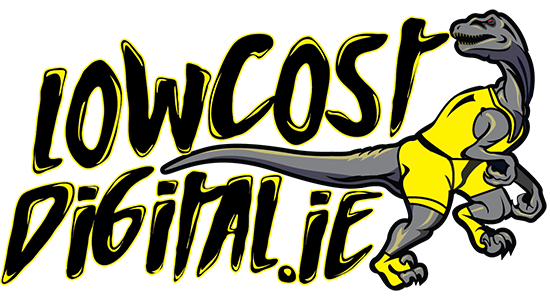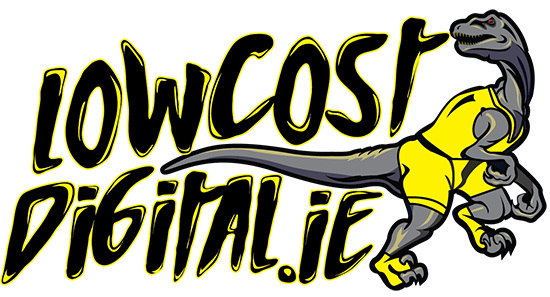Key Highlights
- Ensure consistent branding throughout the website to build trust and familiarity with the audience- Place important information at the top of the page to grab the attention of visitors
- Use visual hierarchy to guide users’ focus and highlight key details
- Create a smooth user experience by prioritizing functionality, ease of use, and accessibility
- Write engaging copy that converts by using action-oriented language and addressing visitors’ needs
- Add clear and compelling calls to action (CTAs) to prompt user actions and increase conversions
- Optimize text for search engines to improve visibility and ranking in search results
- Design with mobile devices in mind to ensure a responsive and user-friendly experience
- Leverage social media buttons to encourage content sharing and increase website traffic
- Utilize A/B testing and feedback to continuously improve website design and user experience
Introduction
In today’s digital age, having a well-designed website is crucial for businesses to succeed online. A visually appealing and user-friendly website not only attracts visitors but also enhances user experience, boosts engagement, and increases conversions. To achieve these goals, web designers must adhere to web design standards and best practices.
Web design standards refer to the norms and models for web page layouts and user experience (UX) features that are used by marketers and web designers in comparative evaluations. These standards provide guidelines for ensuring usability and consistency across websites. On the other hand, best practices are proven techniques and strategies that have been found to be effective in creating high-performing websites. Understanding and implementing web design standards and best practices is essential for creating a successful and user-friendly web page.
By mastering web design standards and best practices, designers can create websites that not only meet users’ expectations but also align with the requirements of search engines for improved visibility and ranking. In this blog, we will delve into the key highlights of web design standards and explore the best practices that web designers should follow, including incorporating effective website design techniques, to create exceptional websites. www.lowcostdigital.ie
Understanding Web Design Standards
Web design standards are a set of norms and guidelines that provide a framework for creating visually pleasing and user-friendly websites. These standards encompass various aspects of web design, including layout, typography, color palette, and overall site structure. By adhering to web design standards, designers ensure consistency across the website, enhance user experience, and establish a strong brand identity. Consistent branding is a key component of web design standards as it helps in building trust and familiarity with the target audience.
The Role of Web Design in User Experience
User experience (UX) plays a crucial role in the success of a website, and website design is a key factor in shaping the user experience. The design elements and functionality of a website can greatly impact how users interact with it and ultimately determine their level of satisfaction. A well-designed website takes into consideration the needs and preferences of the target audience, provides intuitive navigation, and ensures that important information is easily accessible. By focusing on user experience in website design, designers can create a positive and engaging online environment that keeps potential customers coming back for more. www.lowcostdigital.ie
Key Components of Web Design Standards
Web design standards encompass various key components that contribute to the overall visual appeal and usability of a website. These components include:
- Visual Hierarchy: Designers use visual hierarchy to guide users’ attention and highlight important information or elements.
- Design Elements: Typography, color palette, imagery, and layout are important design elements that contribute to the overall aesthetics and functionality of a website.
- Consistent Branding: Adhering to consistent branding guidelines ensures that the website aligns with the brand’s identity and creates a cohesive visual experience for the audience.
Web designers play a crucial role in implementing web design standards by carefully considering these components and creating visually appealing and user-friendly websites.
Best Practices in Modern Web Design
In the ever-evolving world of web design, it is essential for designers to stay updated with the latest best practices. These best practices are proven techniques and strategies that have been found to be effective in creating high-performing websites. Some of the best practices in modern web design include:
- Responsive Design: Designing websites that are responsive and adapt to different screen sizes and devices.
- Mobile-Friendly Design: Optimizing websites for mobile devices to provide a seamless browsing experience for mobile users.
- User-Centric Design: Putting the needs and preferences of the users at the forefront of the design process.
- Accessibility: Ensuring that websites are accessible to all users, including those with disabilities.
By following these best practices, designers can create websites that are visually appealing, user-friendly, and aligned with the expectations of users and search engines. www.lowcostdigital.ie
Emphasizing Mobile-First Design Approach
With the increasing use of mobile devices for browsing the internet, it is essential for web designers to adopt a mobile-first design approach. A mobile-first design approach involves designing websites for mobile devices first and then scaling up to larger screens. This approach ensures that the website provides a seamless browsing experience on mobile devices, which are often the primary means of accessing the internet for many users. Additionally, with over 50% of website traffic coming from mobile devices, it is crucial for websites to be responsive across all devices in order to retain users and prevent frustration.
Responsive design, which is an important aspect of a mobile-first approach, allows websites to adapt to different screen sizes and resolutions, providing an optimal viewing experience on any device. By emphasizing a mobile-first design approach and implementing responsive design techniques, such as mobile responsiveness, designers can cater to the growing number of mobile users and improve the overall user experience of their websites. Additionally, search engines prioritize mobile-friendly websites in their rankings, making mobile-first design crucial for search engine optimization (SEO).
Implementing Responsive Design Techniques
Implementing responsive design techniques is crucial in ensuring that a website provides an optimal viewing experience across different devices. Some key responsive design techniques include:
- Fluid Grids: Using relative units, such as percentages, instead of fixed units, such as pixels, to create flexible layouts that adapt to different screen sizes.
- Flexible Images: Using CSS techniques, such as max-width, to ensure that images scale proportionally to fit different screen sizes without distorting or overflowing.
- Media Queries: Using CSS media queries to apply different styles and layout adjustments based on the characteristics of the device, such as screen width and orientation.
These responsive design techniques allow websites to adapt to various devices and screen sizes, ensuring that all visual elements, including images, text, and interactive features, are displayed correctly. Implementing a responsive design approach also involves optimizing the layout and functionality of elements such as navigation menus and search bars for different screen sizes. www.lowcostdigital.ie
Enhancing Accessibility and Inclusivity
Creating websites that are accessible and inclusive is not only a legal and ethical requirement but also a best practice in web design. Accessibility refers to designing websites that can be easily accessed and used by people with disabilities, such as visual impairments, hearing impairments, or mobility limitations. Inclusive design goes beyond accessibility and aims to create websites that can be accessed and used by all users, regardless of their abilities or disabilities.
By following accessibility and inclusive design principles, web designers can create websites that are user-friendly, provide equal access to information, and ensure a positive user experience for all users. This involves considering factors such as font size and color contrast for readability, providing alternative text for images and multimedia content, implementing keyboard navigation for users who cannot use a mouse, and utilizing ample white space to create a clean and visually pleasing layout.
Guidelines for Creating Accessible Web Content
Creating accessible web content involves considering various important elements throughout the design process and user interface. Some guidelines for creating accessible web content include:
- Use clear and concise language for content, headings, and labels, making it easier for users with cognitive disabilities or reading difficulties to understand.
- Ensure proper color contrast between text and background to improve readability for visually impaired users.
- Provide alternative text for images and multimedia content to enable screen readers to describe the content to visually impaired users.
- Implement keyboard navigation options to accommodate users with mobility impairments who cannot use a mouse.
- Test and validate the website’s accessibility using accessibility evaluation tools and guidelines, such as WCAG (Web Content Accessibility Guidelines) standards.
By following these guidelines, web designers can ensure that their websites are accessible to all users, regardless of their abilities or disabilities. www.lowcostdigital.ie
Importance of Inclusive Design in Web Development
Inclusive design is an important aspect of web development as it allows websites to cater to diverse audiences and provide equal access to information and functionality. By considering the needs and preferences of different user groups, inclusive design helps create websites that are user-friendly and accessible to all.
For example, when designing navigation menus, web developers should ensure that they are easy to navigate and understand for users with different abilities. This may involve providing clear labels, avoiding complex dropdown menus, and implementing keyboard navigation options. By taking into account the needs of users with disabilities, web developers can create websites that are inclusive and provide a seamless user experience for all users, making user-centric design a crucial aspect of web development.
Visual Hierarchy and Its Impact on Web Design
Visual hierarchy refers to the arrangement and presentation of visual elements on a web page to guide users’ attention and highlight important information. It plays a crucial role in web design as it helps users navigate and understand the content more easily. By utilizing techniques such as size, color, contrast, and positioning, designers can create a visual hierarchy that directs users’ focus and ensures that important information stands out. Understanding the impact of visual hierarchy on web design is essential for creating a user-friendly and visually appealing website.
White space, or negative space, also plays a significant role in visual hierarchy. By strategically incorporating white space around important elements, designers can create a sense of balance and enhance the overall readability and visual appeal of the web page. www.lowcostdigital.ie
Strategies for Effective Use of Visual Hierarchy
To create an effective visual hierarchy on a website, designers can utilize various strategies and techniques. Some strategies for effective use of visual hierarchy include:
- Size and Scale: Use larger and more prominent visual elements to draw attention and indicate importance. Smaller elements can be used for secondary information or less important details.
- Color and Contrast: Utilize contrasting colors to make important information stand out and create a visual hierarchy. For example, use bold colors for headlines or important buttons.
- Positioning and Alignment: Place important elements at the top or center of the page to grab users’ attention. Align elements to create a sense of order and organization.
- Typography: Use different font sizes, styles, and weights to differentiate between headings, subheadings, and body text. This helps users navigate and understand the content more easily.
- Negative Space: Incorporate white space around important elements to create visual separation and enhance readability.
By implementing these strategies, designers can create a clear and effective visual hierarchy that improves the user experience and guides users’ attention to important information on the web page.
Examples of Visual Hierarchy in Web Design
Visual hierarchy plays a crucial role in guiding users’ attention and highlighting important information on a web page. Here are some examples of visual hierarchy in web design:
- On a landing page, the hero image or video is often the most prominent element, followed by a headline and a call to action button.
- In a blog post, the title or headline is usually larger and more prominent than the body text, helping users quickly identify the main topic.
- In a navigation menu, the menu items can be differentiated by size, color, or position. Important pages or sections can be highlighted with a different color or font weight.
These examples demonstrate how visual hierarchy can be used to create a clear and organized presentation of information, making it easier for website visitors to navigate and find the information they need. www.lowcostdigital.ie
Optimizing Web Design for SEO
Optimizing web design for search engine optimization (SEO) is essential for improving a website’s visibility and ranking in search engine results pages (SERPs). Web design elements can impact how search engines crawl and interpret a website’s content. By following SEO best practices in web design, designers can enhance a website’s chances of ranking higher in search results and attracting organic traffic. Key areas of web design optimization for SEO include optimizing title tags, meta descriptions, heading tags, keywords, images, and internal and external links. Incorporating search engine optimization into web design is crucial for driving traffic and improving the overall success of a website.
Integrating SEO Best Practices into Web Design
Integrating SEO best practices into web design involves optimizing various elements to improve a website’s visibility and ranking in search engine results. Some SEO best practices that can be integrated into web design include:
- Optimizing Title Tags: Incorporate relevant keywords in title tags to provide search engines with a clear understanding of the webpage’s content.
- Writing Meta Descriptions: Craft concise and compelling meta descriptions that accurately summarize the webpage’s content and encourage users to click on the search result.
- Using Heading Tags: Utilize heading tags (H1, H2, H3, etc.) to structure the content and highlight important sections for search engines and users.
- Conducting Keyword Research: Identify relevant keywords and incorporate them naturally throughout the content to improve the website’s relevance and visibility in search results.
- Optimizing Images: Optimize image file names, alt tags, and descriptions to provide search engines with contextual information about the images.
By integrating these SEO best practices into web design, designers can ensure that the website is optimized for search engines and has a better chance of ranking higher in search results. www.lowcostdigital.ie
The Relationship Between Web Design and Search Rankings
Web design plays a significant role in a website’s search rankings and overall performance. The relationship between web design and search rankings can be understood through various factors. For example:
- User Experience: A well-designed website with intuitive navigation, clear information architecture, and fast loading times contributes to a positive user experience. Positive user experiences lead to longer website visits, lower bounce rates, and higher engagement, all of which are important factors considered by search engines when ranking websites.
- Mobile Responsiveness: With the increasing use of mobile devices for browsing the internet, search engines prioritize mobile-friendly websites. Responsive web design ensures that a website adapts and functions well on different screen sizes and devices, leading to better search rankings.
- Content Organization: Effective web design helps in organizing and presenting content in a user-friendly and easily accessible manner. Well-structured content with relevant keywords and headings improves search engine visibility and indexing.
By focusing on web design elements that enhance user experience, mobile responsiveness, and content organization, designers can positively impact a website’s search rankings, increase website traffic, and reduce bounce rates.
User Interface (UI) Design Trends
User interface (UI) design trends influence the visual aesthetics, functionality, and overall user experience of a website. Staying updated with the latest UI design trends allows designers to create modern and visually appealing websites that align with current design standards. These trends are often influenced by factors such as user preferences, technological advancements, and brand identity. By incorporating UI design trends that resonate with the target audience and reflect the brand’s identity, designers can create websites that are visually engaging, intuitive to use, and memorable. However, it’s important to carefully consider and prioritize which trends to incorporate in a website’s design, as it’s not always possible to include all of them at once. www.lowcostdigital.ie
Emerging UI Design Trends for Web
As technology continues to evolve, new UI design trends emerge in the web design industry. Some emerging UI design trends for the web include:
- Minimalism: Clean and minimalistic designs with ample white space and simple typography are gaining popularity for their simplicity and focus on essential content.
- Dark Mode: Dark mode interfaces, which feature dark-colored backgrounds and light-colored text, are becoming increasingly popular as they reduce eye strain and provide a visually striking aesthetic.
- Microinteractions: Microinteractions are small, subtle animations or feedback elements that enhance user engagement and provide a delightful user experience.
- Personalization: Customized user experiences that adapt to individual preferences and behaviors are becoming more prevalent, allowing websites to provide tailored content and recommendations.
When incorporating emerging UI design trends, it is important to consider the brand’s guidelines and ensure that the design aligns with the brand identity. Additionally, relevant content should be prioritized to enhance the user experience and meet the users’ needs.
How UI Design Influences User Behavior
UI design has a significant influence on user behavior and can greatly impact how users interact with a website. Some ways UI design influences user behavior include:
- Color Psychology: The color palette and color scheme used in UI design can evoke different emotions and impact user behavior. For example, warm colors might create a sense of urgency or excitement, while cool colors might create a sense of calmness or relaxation.
- Visual Cues: UI design can use visual cues, such as arrows or progress indicators, to guide users and encourage specific actions or behaviors.
- Readability and Usability: Clear typography, proper spacing, and intuitive navigation contribute to a positive user experience and encourage users to explore and engage with the website.
- Interactive Elements: Well-designed interactive elements, such as buttons or forms, can encourage user engagement and prompt desired actions.
By understanding how UI design influences user behavior, designers can create websites that effectively guide users, encourage desired actions, and provide a positive and engaging user experience. www.lowcostdigital.ie
User Experience (UX) Design Best Practices
User experience (UX) design focuses on creating a seamless and enjoyable experience for website visitors. By following UX design best practices, designers can enhance the usability, accessibility, and overall satisfaction of users. Some UX design best practices include:
- User-Centric Design Approach: Designing with the needs and preferences of the target audience in mind, ensuring that the design aligns with their expectations and goals.
- Value Proposition: Clearly communicating the unique value and benefits of the website or product to users, making it easy for them to understand why they should choose it.
- Intuitive Navigation: Providing clear and easy-to-use navigation menus and links to help users find the information or functionality they are looking for.
- Consistency: Maintaining consistency in design elements, layout, and interaction patterns throughout the website for a cohesive and familiar user experience.
By implementing these UX design best practices, designers can create websites that are user-friendly, engaging, and meet the needs of their target audience.
Creating a Seamless User Experience on the Web
Creating a seamless user experience on the web is crucial for keeping site visitors engaged and satisfied. To achieve a seamless user experience, consider the following:
- Simplify Navigation: Ensure that the website’s navigation is clear, intuitive, and easy to use, allowing visitors to find what they’re looking for quickly.
- Streamline Content: Present information in a concise and easily digestible manner, using clear headings, short paragraphs, and relevant visuals to enhance readability.
- Optimize Page Speed: Ensure that the website loads quickly to prevent visitors from losing interest or becoming frustrated.
- Provide Clear Call-to-Action: Use well-designed and prominent call-to-action buttons or links to guide visitors towards the desired actions.
- Minimize Distractions: Avoid cluttered layouts, excessive pop-ups, or disruptive elements that can distract visitors from their intended tasks.
By focusing on creating a seamless user experience, designers can keep site visitors engaged, reduce bounce rates, and increase conversions. www.lowcostdigital.ie
UX Design Principles to Enhance User Satisfaction
Enhancing user satisfaction is a key objective of UX design. By considering the following UX design principles, designers can optimize the user experience and increase user satisfaction:
- Understand User Needs: Conduct user research to gain insights into users’ goals, preferences, and pain points, and use this information to inform the design decisions.
- Provide Clear Feedback: Communicate with users through visual cues, animations, or notifications to provide feedback and confirmation for their actions.
- Streamline User Flows: Design intuitive and efficient user flows to guide users through the website and help them achieve their goals with minimal effort.
- Test and Iterate: Continuously test the website’s usability and gather user feedback to identify areas for improvement and make iterative design changes.
- Personalize the Experience: Tailor the user experience to individual users’ preferences and behaviors, providing personalized recommendations and content.
By applying these UX design principles, designers can create websites that meet the needs and expectations of their target audience, resulting in higher user satisfaction and increased conversions.
Call to Action (CTA) – Crafting Effective CTAs in Web Design
Crafting effective calls to action (CTAs) is essential in web design as they prompt users to take specific actions and increase conversion rates. CTAs can be in the form of buttons, links, or interactive elements that guide users towards desired actions, such as signing up for a newsletter, making a purchase, or requesting more information. To create effective CTAs, designers should consider the following tips, including adding clear and visually appealing CTA buttons.
- Clear and Action-Oriented Language: Use concise and compelling language that clearly communicates the desired action and the benefit to the user.
- Design and Placement: Make CTAs visually distinct and easy to locate, using contrasting colors, size, or placement on the page.
- Contextual Relevance: Ensure that CTAs are placed in appropriate contexts and aligned with the users’ journey and page content.
By crafting effective CTAs, designers can encourage user engagement, improve conversion rates, and drive desired user actions. www.lowcostdigital.ie
Best Practices for Designing CTAs
Designing effective CTAs involves following best practices that encourage user engagement and improve conversion rates. Some best practices for designing CTAs include:
- Use Action-Oriented Language: Use strong verbs and action-oriented language that clearly communicates the desired action and the benefit to the user.
- Make CTAs Stand Out: Use contrasting colors, size, and placement to make CTAs visually distinct and attention-grabbing.
- Provide Visual Cues: Use visual elements such as arrows, icons, or hover effects to guide users’ attention towards the CTA button.
- Consider Placement and Context: Place CTAs strategically in relevant contexts, such as at the end of a blog post or on a product page, where users are most likely to take action.
- Test and Iterate: Continuously test and optimize CTAs based on user feedback and data to improve their effectiveness.
By following these best practices, designers can create CTAs that effectively drive user engagement, improve conversion rates, and increase the overall success of marketing websites.
Examples of Successful CTAs in Web Design
Successful CTAs in web design can vary depending on the website’s goals and target audience. Here are some examples of successful CTAs:
- “Join our community of over 1 million satisfied customers!”
- “Get your free e-book now and unlock exclusive tips and insights!”
- “Start your 30-day free trial and experience the difference!”
- “Sign up for our newsletter and never miss out on our latest updates!”
These examples demonstrate the use of persuasive language, social proof, and clear value propositions to encourage users to take action. By incorporating such effective CTAs into web design, designers can improve conversion rates and drive desired user actions.
Leveraging Multimedia Content in Web Design
Leveraging multimedia content, such as videos and images, in web design can greatly enhance user engagement and create a more interactive browsing experience. Multimedia content not only captures users’ attention but also helps convey information more effectively and make the website more memorable, allowing them to imagine themselves using the products in their everyday lives. By incorporating multimedia content strategically, designers can create visually appealing and engaging websites that leave a lasting impression on visitors.
Balancing Text and Multimedia for Enhanced Engagement
Finding the right balance between text and multimedia content is crucial for enhancing user engagement in web design. While text content provides detailed information and supports search engine optimization, multimedia content, such as images, videos, or infographics, adds visual interest and captures users’ attention. By combining text and multimedia elements effectively, designers can create a dynamic and engaging browsing experience that appeals to different types of users. It is important to ensure that the multimedia content enhances and complements the text content, rather than overwhelming or distracting users. Here’s a great example of balancing text and multimedia on a homepage from HERoines Inc. By using a simple design with a clear call to action and relevant images, they effectively engage their audience and convey their message.
Tips for Incorporating Video and Audio Effectively
Incorporating video and audio content effectively in web design can greatly enhance user engagement and create a more immersive experience. Some tips for effectively incorporating video and audio content include:
- Use high-quality videos and audio files to ensure a professional and polished presentation.
- Keep video content concise and focused to maintain users’ attention and avoid information overload.
- Provide clear captions or transcripts for video and audio content to accommodate users with hearing impairments or language preferences.
- Optimize videos and audio files for fast loading times to prevent users from experiencing delays or buffering issues.
- Consider the user’s browsing environment and provide options for users to control autoplay and volume settings.
By following these tips, designers can create websites that effectively utilize video and audio content to enhance user engagement and create a more interactive browsing experience.
Conclusion
Mastering web design standards is crucial for creating a user-centric digital experience. By understanding the key components of web design, emphasizing mobile-first approaches, and optimizing for SEO, you can enhance accessibility and inclusivity while staying on top of emerging UI design trends. Crafting effective CTAs and leveraging multimedia content will further elevate user engagement. Remember, user experience is at the core of successful web design. Continuously adapting to future trends and selecting the right web design agency are pivotal for staying ahead in the competitive digital landscape. Let your web design speak volumes about your brand’s commitment to user satisfaction and innovation. www.lowcostdigital.ie
Frequently Asked Questions
What Are the Essential Web Design Standards?
Essential web design standards include consistent branding throughout the website, clear and intuitive navigation menus, and visually appealing layouts. Designers must ensure that important pages, such as the homepage and key sections, are easily accessible from the navigation menu and that the overall design aligns with the brand’s guidelines.
How Can Web Design Improve User Experience?
Web design has a significant impact on user experience by creating visually appealing and user-friendly websites. Through elements such as visual hierarchy, intuitive navigation, and engaging design elements, web design enhances the overall usability and satisfaction of users when interacting with a website.
What Are the Future Trends in Web Design?
Future trends in web design include the continued focus on responsive design to cater to the increasing use of mobile devices, the integration of artificial intelligence and chatbots for personalized user experiences, and the exploration of new technologies such as virtual reality and augmented reality to create immersive web experiences.
How to Choose the Right Web Design Agency?
When choosing a web design agency, consider their expertise in designing websites for your target audience, their understanding of your brand identity, their design process and approach, and their focus on creating user-centric experiences.












